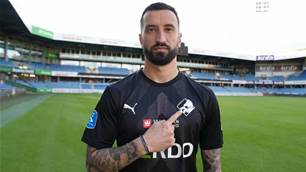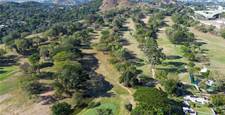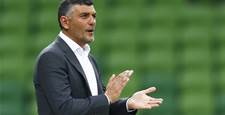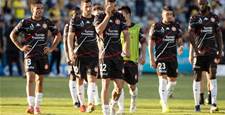DIZZY highs, miserable lows and landmark changes. Here are our top 50 moments, in no particular order, that shaped and defined Australian football as we know it today
W-League on free-to-air
The advent of the W-League in 2008 allowed a new generation of football fans to watch their heroes on free-to-air TV - in this instance the eight team women's league. ABC's coverage of live W-League games finally gave our female players the exposure they deserved at a time the women's game was enjoying unprecedented popularity off the back of the Matildas strong showing in the 2007 World Cup. And don't think the deal was just an equal opportunities exercise - reports had viewing figures averaging 100,000, far above those of A-League games from the same season.
Stewart Royal Commission 1994
The Stewart report was commissioned by the Australian Soccer Federation into aspects of the running of the game, and while initially the report was kept secret for legal reasons, it was eventually flushed out by a Senate inquiry.
The whole thing was entertaining, if not a little embarrassing, for the code to air its dirty... no, make that filthy laundry in public.
Feisty Senator Peter Baume suggested in the Senate Committee the sport needed an enema, also writing to The Australian, accusing journo Ray Gatt of running a "continually inaccurate campaign" regarding the inquiry. National team boss Eddie Thomson was the show-stopper though, with the classic riposte, "They wouldn't hang OJ Simpson with this evidence."
ASF boss John Constantine resigned as a result of the report, some reputations were tarnished, and there was a rash of finger-pointing while allegations of death threats and claims of kickbacks were also made.
There were other issues, including allegations some national team player were called up to help procure overseas contracts. The report recommended the abolition of domestic player transfer fees.
In the end, the whole sad, murky saga reinforced the sport's image as the pot-smoking dude on the dole. And the report didn't change a damn thing.
South Melbourne face Manchester United
FIFA's obsession with a club world championship began at the turn of the millennium in Brazil and, as Oceania champions, South Melbourne got their day in the Rio sun.
The draw saw reigning EPL and European champions Manchester United, Brazil's Vasco da Gama and Necaxa of Mexico lined up to play little South.
Just as the Olyroos proved at the 1992 Olympics, Australian football and its players should never be underestimated. Under the guidance of Ange Postecoglou, South were compact, defended well and didn't look out of their depth at the fabulous Maracana.
For many players, it was a defining moment in their modest club careers. "He worked so hard off the ball," recalls Richie Alagich of playing against David Beckham. "You don't necessarily see it [on TV]. That's when you realise what a great player he is."
After losses to United and Vasco,John Anastasiadis bagged South's first goal of the tournament in a 3-1 loss to the Mexicans. The NSL part-timers left with their reputations enhanced despite finishing bottom of the group.
"I remember defending a corner," South midfielder Steve Panopoulos remembers. "We were marking up and I turned to Steve [Iosifidis] and said, 'You got Edmundo?' and he said, "Yeah, you got Romario?'. The ball cleared and we looked at each other as if to say, 'Is this really happening?'"
Tim Cahill is cleared to play for Australia
In some alternate universe, Australia is still looking to make its second World Cup appearance and Tim Cahill is a free-scoring midfielder for the Republic of Ireland. Yes, if events had turned out differently just five years ago, the above fantasy could have been reality.
Due to an appearance for Samoa at 14, Cahill was seemingly locked in to play for the Pacific nation under FIFA rules. In 2002, Tim threatened to take the governing body to court if they would not release him to play for his country of choice... the Republic of Ireland!
The furore lasted another two years, and when Cahill was finally cleared to play senior international football, he chose the green and gold of his country of birth and made his debut for Australia in March 2004 against South Africa.
Let's not ponder too long on how Cahill in the emerald green would have impacted on the destiny of our game...
Frank Lowy arrives in Australia 1952
If it wasn't for Frank Lowy, you wouldn't be reading this magazine, watching the A-League or enjoying the Socceroos at a World Cup. It's that simple.
It was his return to the game in 2003 that triggered remarkable changes in the last six years.
Lowy built a business empire after arriving here from Europe in 1952. In fact, he's in the top two or three richest in the country - give or take a few hundred thousand dollars.
But more than that, he's built a valuable network of contacts at the highest level. For a decade, he was a board member of the Reserve Bank, he has his own Institute for International Policy and currently he is
a member of the FIFA World Cup Organising Committee too.
Wisely, and fortuitously, he was able to corral political help and cash injections to galvanise the sport.
Not bad for a guy who arrived here with just a dream of making a better life for himself and a lasting passion for world football.
Australia's first international
With World War I scuppering the formation of an Australian Soccer Association, the swelling ranks of Aussie footballers caused by returning servicemen finally saw a governing body formed in 1921.
A year later a national team was formed for the very first time to tour New Zealand and play 14 friendly games between May and July 1922. Australia's first ever international was played on June 17 in front of 10,000 people at Carisbrook Park, Dunedin and ended in a 3-1 defeat.
And while we all know Tim Cahill scored our first ever World Cup goal, Australia's first ever international goalscorer was... Anyone...? You in the back...? Bill Mauder.
Mark Bosnich joins Manchester United
"I could not have found myself sitting in Italy or Spain, having turned down the chance to follow Peter Schmeichel."
And so the Mark Bosnich era at Manchester United began, with the then 27 year-old joining from Aston Villa on a free transfer to replace the 'Great Dane'.
Bosnich had come full-circle, returning to the club he played for as a teenager but ultimately left because Schmeichel was blocking his way.
The most talented Aussie of his generation, Bozza had shown at Villa he was a world class keeper, but his time at United was blighted by injury and Ferguson's inability to give one keeper a good run.
Although he won a Premier League winners' medal in his first season, Bosnich only played 23 times for United before signing with Chelsea in 2001. PH
Viduka 4 Liverpool 3
A legend at times, a scapegoat for a lack of heart at others - Mark Viduka was Australian football's greatest enigma.
After tearing the NSL apart at Melbourne Knights, and spells at Dinamo Zagreb and Celtic, it was Viduka's 2000 move to Leeds that propelled him to superstar status.
During his inaugural season Mark struck 22 goals, the most memorable being his flurry of four during an incredible performance in a 4-3 win over Liverpool, his first ever match-up with The Reds.
His four strikes highlighted all the tricks at Viduka's disposal. The first was a clinical finish, second a glancing header and third a memorable 360 spin and finish off the post. And possibly his best of all, with the game locked at 3-3, Dukes produced his fourth with the cheekiest of chips.
An Aussie scoring four goals in the English top flight against one of the biggest clubs in the world was a watershed moment for the profile of our footballers.
It looked to be a taste of things to come for the talented striker, but after disappointing spells at Middlesbrough and Newcastle, it proved to be the highpoint.
SBS is launched 1980
Australia's anglo-saxon view of the world got a healthy dose of global perspective when the Special Broadcasting Service - or 'Channel 0/28' as it was officially called - launched in 1980.
It also launched the on-camera careers of Les Murray and Johnny Warren who presented and dissected a new world of football coverage. SBS's amazing coverage of Serie A, England, South America, Europe and others opened our eyes to a glistening football world beyond our shores - even if it cemented the sport's position as a multi-cultural beacon.
SBS - or "Soccer Bloody Soccer" as some half-joked - arose at a juncture when football was sometimes tagged with the decidedly pejorative "wogball". "Bringing the world back home" was the network's cute slogan.
And for many Aussie footballers, SBS was the catalyst for an overseas career. It defined and focussed the dreams of the coming generations of footballers who'd go from watching these leagues to playing in them.
Schwarzer saves... and Aloisi scores 2005
It's impossible to separate the actions of Mark Schwarzer and John Aloisi when recalling the events of that magical Wednesday night in November 2005.
Both men showed almost superhuman levels of composure, concentration and skill to recall the very basics of their job and apply them to the most significant moment of their careers.
Where the heroes of November differ though was in their approach to said jobs, especially on the eve of the
big match.
While coach Guus Hiddink's final training session did include a penalty-taking session, Schwarzer and Aloisi's attitude to a shoot-out couldn't have been more different.
For the then-33 year old keeper, he recalls doing "just OK" after saving a couple of pens in training but didn't put too much stock in the extra practice.
"I'm not one to practice saving penalties," said Schwarzer recently. "I like to see what a opposing player likes to do on penalties but I don't necessarily like to go out there and practice it. For me it doesn't work that way."
In contrast, Aloisi had a funny feeling he might be taking a penalty in the game and so went for some extra practice afterwards with Lucas Neill.
"We were joking around, asking where people's family were going to be sitting so I knew where to run when I scored the goal!" Aloisi told FourFourTwo last year.
"I hit all five in the same corner because I was thinking you have to pick a spot with a penalty and stick with it. If you change your mind, that's when... you don't take a good penalty. I hit them all perfectly."
Practice is practice though. Having to stop/score a spot-kick to take your country to its first World Cup in more than 30 years is something entirely different.
As anyone who was at the game can attest, the tension rose as the game progressed until it reached almost snapping point with the start of the shoot-out.
Schwarzer was the set-up man to history saving Dario Rodriguez's first penalty with ease. He later said he felt he was 'in the zone', able to read which side each taker was going to place the ball. His second save of Zalayeta's well-struck shot sums up Schwarzer as a goalkeeper: a brilliant combination of instinct and technique.
And so the stage was set for Aloisi, the unlikely hero. Brought on just before the end of full-time - and knowing Hiddink, probably for just this moment - the hopes of a nation rested squarely on his shoulders.
"I did think, 'Do exactly what you did yesterday and you'll take Australia to the World Cup'," said Aloisi.
And we all know what happened next.
Related Articles

Socceroos midfielder embraces move to England
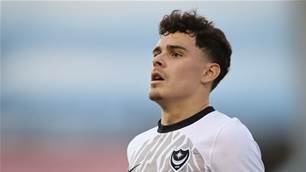
Cardiff City snap up sought-after Socceroos starlet
